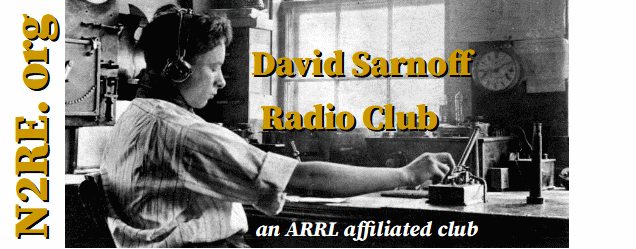Meeting announcement (Edited)
Once tuning an antenna was a lot of guesswork, with paper plotting
of SWR and fiddling with matching sections. Now with a NanoVNA you
can see the match, and watch as you tune up an antenna… across
the band! If you have a NanoVNA, please bring it!
Once sending email via VARA HF Winlink required using the current
solar flux index to calculate a radio propagation model, then select
an HF RMS node from a list, and hope that it works. Now the new
Winlink Real-Time HF Connection Monitor application allows one to
view a live map display of active HF Winlink sessions worldwide,
including ones initiated by stations near you.
We will also discuss updates on our ARRL Field Day participation June 28-29, the MORE
Project, the club repeaters, and our Tuesday DSRC VHF nets.
Some pictures from N2CTW presentation:
Well, the demo wasn’t really a demo. We did get to see both NanoVNA-App and NanoVNASaver in action, though not with antennas being tested. Well, maybe the notes below will be helpful.
The images below show how the frequency response of a shortened dipole made with MFJ Hamsticks changes as you add the extender rods. NanoVNA-App captures.




Some random helpful text from the Internet:
https://static.eleshop.nl/mage/media/downloads/Absolute_Beginner_Guide_NanoVNA_v1_6.pdf
Written by: Martin Svaco, 9A2JK
email: 9a2jk@hamradio.hr
Version: 1.6 26th January 2021
https://github.com/NanoVNA-Saver/nanovna-saverReferences
Ohan Smit wrote an introduction to using the application: [https://zs1sci.com/blog/nanovnasaver/]
HexAndFlex wrote a 3-part (thus far) series on Getting Started with the NanoVNA: [https://hexandflex.com/2019/08/31/getting-started-with-the-nanovna-part-1/] - Part 3 is dedicated to NanoVNASaver: [https://hexandflex.com/2019/09/15/getting-started-with-the-nanovna-part-3-pc-software/]
Gunthard Kraus did documentation in English and German: [http://www.gunthard-kraus.de/fertig_NanoVNA/English/] [http://www.gunthard-kraus.de/fertig_NanoVNA/Deutsch/]NanoVNA
(Version H2 / H4)
A Vectorial Network Analyser covering
50kHz to 1500MHz and a Time Domain
Reflectometer
Part 2:
Manual for the Usage from 50 kHz up
to 1500 MHz and the TDR function
Version 1.0.
Author: Gunthard Kraus, DG8GB
Tettnang / Germany, May 5th , 2020
https://rickettslab.org/nano-vna-pc-interface-setup/
2025 David S. Ricketts. All Rights Reserved.
https://github.com/sysjoint-tek/NanoVNA-Saver-0.3.10-by_SYSJOINT?tab=readme-ov-file
https://nanovna.com/?page_id=141 This is the page for NanoVNA-App
Winlink Real-Time HF Connection Monitor application
https://downloads.winlink.org/User%20Programs
“Once sending email via VARA HF Winlink required using the current
solar flux index to calculate a radio propagation model, then select
an HF RMS node from a list, and hope that it works. Now the new
Winlink Real-Time HF Connection Monitor application allows one to
view a live map display of active HF Winlink sessions worldwide,
including ones initiated by stations near you.”
the monitor program requires you to register with VARA… NU3E showed the program which displays a world map, populated with a line every time a station contacts a VARA gateway.
Rather like the view on https://winlink.org/RMSChannels, but showing connections. NU3E showed how to zoom in, and how to set how long the sessions were displayed (60 minutes is his favorite duration.) Watching the connections gives a good idea of the current propagation distance for each band (we watched 40 Meters), as most stations are one skip-distance away from the RMS node.
